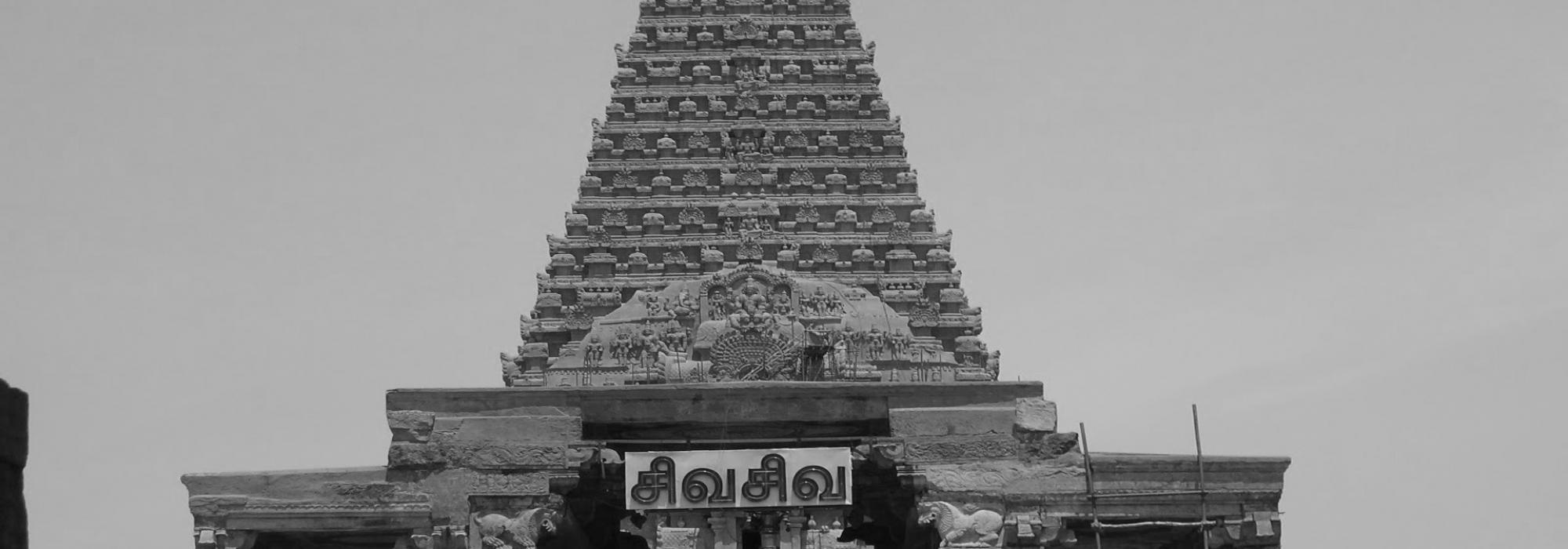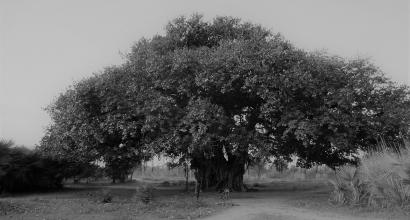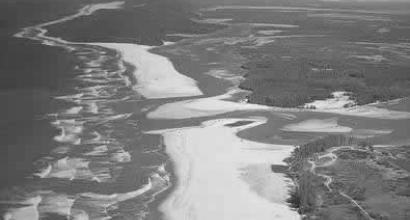The name Nrpatunga has a pre-eminent place in the hearts of the Kannada people. He has gained such fame because of the treatise Kavirajamarga, which he composed along with Srivijaya. Although he was a great warrior imbued with the brilliance of kshaatra, he knew how to manage the kingdom in a balanced manner during peacetime. Indeed, his royal clan was renowned for kshaatra. The Rashtrakuta kings defeated the Kannauj rulers on several occasions and brought back treasures and gifts. The historian Dr. Suryanath Kamat writes that the volume titled "Imperial Kannauj" in The History and Culture of Indian People series could have well been "Imperial Rashtrakuta" -- that was the extent of the achievements of King Amoghavarsha, his predecessors, and successors.
The Rashtrakutas had made Manyakheta (today's Manne, Kalaburgi district) their capital and ruled the kingdom from there. It was during the reign of King Nrpatunga (814-878 CE) that Srivijaya composed the Kavirajamarga. The nature of Nrpatunga was not to attack other kingdoms. He was a king who gave more importance to peace and well-being. When his subjects were afflicted by a disease, he offered one of his fingers to the Goddess Mahalakshmi of Kolhapur; such was his self-sacrifice! He nourished poets and scholars. He saw all sects and schools of philosophy with an equal eye. His predecessors Dantidurga, Krishna, Dhruva, Govinda, and others were great warriors. Krishna I was a great emperor. Dhruva had marched until Kannauj with his formidable army. Indra III defeated the Kannauj ruler and returned with treasures and gifts (916 CE). His successor, Krishna III defeated the Paramaras and the Cholas, expanding his kingdom all the way until Rameshwaram. One of the great Rashtrakuta kings, Govinda III marched until the Himalayas with his army.
The Rashtrakutas built the world-famous cave temples in Ellora; they also supported the artistic work at Ajanta. The paintings and sculptures at these spots went on for around three hundred years. Elephanta and Ellora are great exhibits that reflect the artistic taste of the Rashtrakutas. The Rashtrakutas had a wonderful balance of kshaatra (valour) and rasikya (connoisseurship).The post-classical period of Indian history is filled with relentless activity. We have unearthed so much information about this period, making our heads reel, and yet the information is insufficient, incomplete. We don't get confirmed written evidence for the history. Therefore we have to reconstruct the history and write it only using evidences such as the work of poets, inscriptions that talk about land grants and gifts, victory inscriptions, memorial epigraphy, praise of kings (which are not physical inscriptions but memoirs), the accounts of foreign visitors, and so forth.
The exaggerated writings of the poets and the prejudiced views of the foreign visitors have both proven to be obstacles in the writing of our history.

Kolhapur Mahalakshmi
For instance, like Abdul Razak writes, "The group that rebelled against Praudhadevaraya invited several leaders to a lavish feast and killed them all and then wounded the king; he was on the verge of death." There appears to be absolutely no evidence for what Abdul Razak has claimed; till date we have not found any records that attest his opinion.
Yijing (also spelt 'I Tsing'), a Chinese Buddhist visitor to India writes, "Bhartrhari converted from Sanatanadharma into Buddhism and from Buddhism back to Sanatanadharma seven times." There is no evidence for this. Scholars like Punyaraja and Helaraja, who wrote commentaries on the same Bhartrhari's work Vakyapadiya offer their respects to him saying that "Bhagavan Bhartrhari" was indeed an adherent of Sanatanadharma and one of its luminaries.
Several historians complain that there was a lot of infighting in India. But there was infighting in Europe as well. And wasn't it such infighting that resulted in two world wars? These internal fights are not restricted to India alone. It is natural to human behaviour. However many infights we might have had, it has been possible to establish the oneness of Bhaarata. The reason why these infights stand out in the history of our country is because we have not compared it with the history of other countries.
Therefore it has made us look down upon ourselves. If one desires to undertake a serious study of history of a country or a culture, it is not sufficient to see how that one country was at a certain point in time and give all undivided attention to it; in addition, one must also cast a glance at the rest of the world in that era. We must carefully observe the status of the various civilizations and cultures at that point. We must keep in mind these aspects even if we wish to learn about kshaatra.
Just like Kautilya has said in the Arthashastra, kshaatra is the careful management of Trayi, Anvikshiki, Varta, and Dandaniti. Trayi refers to traditional wisdom; Anvikshiki refers to the careful and methodical analysis of any subject or knowledge; Varta pertains to resources; and Dandaniti refers to the military and administrative aspects. Even here, the term kshaatra is primarily used along with Dandaniti. However, Dandaniti is dependent on the other three. Therefore, all these mutually connected aspects form the life-giving elements to the tradition of kshaatra.
Pandya-Chola-Chera

Brihadeshwara Temple
The Cholas ruled in the East coast of Tamil Nadu, the Pandyas in the central regions, and the Cheras ruled in the Western coast. The three of them together have been hailed as the 'muvendirar' ('munu' means 'three' and 'vendan' means 'ruler'). The Chera kingdom of those days is the Kerala of today. Kerala did not directly offer anything to the kshaatra tradition in an active manner. However, it was remarkable in another facet of kshaatra, which is the nourishment of scholarship and creating an eco-system for learning and teaching. When the whole of India was reeling under the blow of the barbaric cult of Islam and when the muslims destroyed several universities, which were verily temples of learning; burnt millions of invaluable treatises; and ravaged the academic edifice, it was Kerala that protected in her lap several rare and priceless works. Kerala is the sole reason for the survival of many great compositions of countless luminaries like Bharata, Kautilya, Bhoja, Abhinavagupta, Bhasa, Mankha, Shaktibhadra, and Mandanamishra. Further, the ports of Kerala played an important role in development of the Indian economy through the export of pepper, dal-chini, betel leaf, betel nut, and areca nut. Another noteworthy feature of Kerala is their preservation of varied art works and shrauta agamic traditions. One cannot also not forget about their extensive research in the areas of ayurveda and mathematics. Therefore the Cheras had the quality of establishing balance and harmony in society. With the ocean on one side and the Western Ghats on the other, Kerala was not a land that was thickly inhabited in those days; people didn't go there in large numbers. Until the arrival of Vasco-da-Gama, the activities in this region were not intense. Vasco-da-Gama committed terrible atrocities on Kerala and her people. Later, Tipu of Mysore killed thousands of people in the Malabar region and forcibly converted millions to Islam. Later due to the utter foolishness and shortsightedness of Gandhi, Kerala witnessed the infamous Moplah Riots during the Khilafat agitation. This was the barbaric, cruel gift handed over to Kerala, which opened its doors to people from all faiths and religions! In all these three instances, Kerala had to undergo a great deal of difficulty. Even during these testing times, we don't see any heroes endowed with kshaatra of a high order. In sum, we find that the Cheras did not have the firmness to obstruct the enemies. As for the Pandyas and their governance, they neither achieved great heights nor fell to great depths. Even so, their contribution to Indian culture and literature by their support and nourishment to the Sangam poets is extraordinary.
In the East coast, first the Pallavas ruled. Subsequently, from the ninth to the fourteenth centuries CE, the Cholas ruled there. Even in that period, the middle two centuries were the pinnacle of the Chola rule. In that dynasty, two kings were pre-eminent: Raja Raja Chola and his son, Rajendra Chola I. Raja Raja Chola was a courageous warrior. The world-famous Brihadeeshvara Temple of Thanjavur was built during his reign. Recently it completed its thousandth year.















































